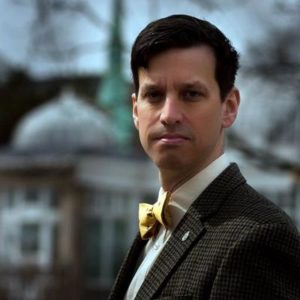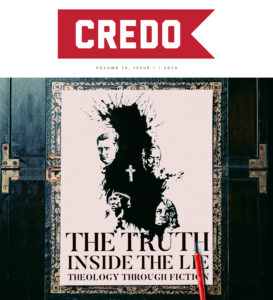D une, by Frank Herbert, has been regarded by many as one of the most accomplished science fiction novels to come out of the twentieth century. It also continues to be one of the best-loved. Like J.R.R. Tolkien’s The Lord of the Rings, which preceded it by a decade, Dune set a new benchmark in its genre for richness of invention, narrative vastness and world-building. As fantasy was never the same after Tolkien, science fiction was utterly changed after Herbert. The novel won both of sci-fi’s most prestigious awards, the Hugo and the Nebula, upon its publication in 1965, and it has not been out of print since.
It was even recently reissued in a couple of expensive and high quality editions. Later this year the third film adaptation of Dune will be hitting the movie theaters. Directed by visionary Canadian film auteur, Denis Villeneuve (The Arrival, Bladerunner 2049), this first of a two part adaptation is already expected to be a benchmark in cinematic sci-fi and has fans waiting in eager anticipation.
The Story and its Continued Appeal
 For those who are not familiar with the novel, here is a brief overview. The story is set approximately 20,000 years in the future. Humanity has spread throughout much of the universe. Despite the many technical advances, there are some surprisingly regressive qualities about this future society. All computers, including artificial intelligence, have been banned. Some humans have been bred or augmented to take on computing or other high tech capabilities. The political order of the universe is feudal, with control resting on an emperor, his imperial court and several powerful families or “houses.” The central character of the novel, Paul, belongs to one of these houses: House Atreides, a name which harkens back to the House of Atreus, one of the most notorious families in all of literature.
For those who are not familiar with the novel, here is a brief overview. The story is set approximately 20,000 years in the future. Humanity has spread throughout much of the universe. Despite the many technical advances, there are some surprisingly regressive qualities about this future society. All computers, including artificial intelligence, have been banned. Some humans have been bred or augmented to take on computing or other high tech capabilities. The political order of the universe is feudal, with control resting on an emperor, his imperial court and several powerful families or “houses.” The central character of the novel, Paul, belongs to one of these houses: House Atreides, a name which harkens back to the House of Atreus, one of the most notorious families in all of literature.
Key to the functioning of this interplanetary empire is a substance called melange, known simply as “the spice.” Ingestion of the spice by humans leads to strange mutations and enhancements over time, including heightened forms of consciousness and extension of life to hundreds of years. Most significantly, in some humans who have ingested large quantities of the spice, it gives them the ability to manipulate space-time. This allows for instantaneous travel over vast interplanetary distances. As such, these “navigators” are key to all galactic travel. The spice is found on only one planet in the universe called Arrakis, which is commonly known as Dune. Dune is governed by one of the feudal houses at the discretion of the emperor and all the other houses. This governing house is responsible for acquiring and processing the spice for the rest of imperium. This in itself is a dangerous task, for the spice is found only in the vast deserts of this near waterless planet, and is guarded by giant sand worms, some of which are hundreds of meters long and very territorial.
As the novel opens, control of Dune is being transferred from one of the other feudal houses (the dangerous and scheming Harkonnen) to the Atreides. There are suspicions the Harkonnen are plotting to attack the Atreides to reacquire control of Dune. Paul, who is fifteen years old when the novel starts, gets caught up in the plot. He is also the product of a multi-generational genetic project conducted by the Bene Gesserit, a secretive all-female order to which his mother belongs, to produce a super being. When the Harkonnen do attack, Paul escapes with his mother and joins forces with the native inhabitants of Dune, called the Fremen. Soon, due to his enhanced abilities, he is recognized as a messianic figure by the Fremen and is made their leader. Paul then leads them in battle against the Harkonnen and the emperor.
What sets Dune apart from earlier science fiction is the incredible attention to the details of its world. Two hundred centuries of human history have allegedly passed, and one gets a sense of the richness of this future human history throughout the narrative. Like Tolkien, Herbert has helpfully provided a glossary, appendixes and even a map in order for readers to keep up and enrich their vision. A couple of decades after Dune came out, another author under Herbert’s guidance even produced a full encyclopedia for the Dune world. Considerable attention was also given to the imagined ecology of Dune, and from his depiction of human interaction with this natural world, Herbert has produced one of the first speculative fictional works to take up the issue of environmentalism.
For many early reviewers, Dune was seen as a thinly veiled allegory of twentieth-century global society. Ecological exploitation and colonialism were identified, but most especially, the spice-based economy was seen as a parallel to our own global oil dependence, much of which involved exploiting the desert-like parts of the earth. Yet this allegorical interpretation does not seem to account for Dune’s continuing appeal today. Nor are its characters, many of which are somewhat two-dimensional. The world building is certainly a significant part of the novel’s attractiveness. Like the Lord of the Rings, it is quite easy and enjoyable to picture oneself inhabiting its imaginative landscape, even outside of the proscribed narrative. Yet also key to Dune’s appeal are some of its themes, which were unique to science fiction at the time, and still have not been handled better since. Two themes in particular stand out, namely the depiction of future humanity and religion.
A Transhumanist Fantasy
Remarkably, while Dune and the other Dune novels are about space travel and inhabiting other planets, there are no legitimate aliens. The only intelligent life which inhabits all the countless planets originated from earth. Though they spread to the far corners of the galaxies, humans are depicted as essentially unique and alone. And after an event known as the “Butlerian Jihad” led to the destruction of all artificial intelligences thousands of years before the beginning of the novel’s narrative, humans had to develop their own abilities. In this sense, Dune can be seen as something of a transhumanist fantasy.
Aided by the spice and other technological developments, humans can live far longer than normal, have increased mental computational power as well as increased strength, speed and physical agility. All the features Elon Musk is hoping to achieve for himself! Humans can even be duplicated after death, leading to a kind of technologically achieved immortality. One character in the Dune series ends up being replicated hundreds of times over thousands of years. Indeed, except for space ships, there is very little visible tech in this world of the kind expected from most science fiction. The focus has been put on how humans can extend their powers through internalized technologies and training. With this in mind it is not hard to understand why Dune became popular amongst many people within the New Age and self-help communities.
A Work Saturated with Religion
A second major theme of the novel is religion. At the time that Frank Herbert wrote the first Dune novel, a common assumption amongst most science fiction authors was what they saw as the impending demise of religion. A good example of this was the contemporaneous TV series, Star Trek (1966‒1969), produced by Gene Roddenberry. In the Star Trek universe, which is set just two hundred years in the future, there is virtually no depiction of religion at all. The assumption of the show’s creator was that religion, which was seen as something of a primitive science, would be eclipsed by the new scientific mindset that would be adopted by all of humanity. And Roddenberry was far from alone in this assessment. Yet unlike Star Trek and most other science fiction of the time, Dune was saturated with religion from beginning to end. And it was not merely in the background; the entire plot was hinged on it.
To be sure, Herbert built on a kind of evolutionary view of religion, where various traditions merged and developed in response to cultural and technological shifts. Zen Buddhist wisdom blended with Islamic jihad, Christian evangelism and space travel. Yet while religion played a vital role in the narrative, there was still a strong element of skepticism regarding it. The Bene Gesserit, who are deeply mystical, also manipulated religion in other civilizations and cultures as part of their social engineering projects. Paul, who is regarded as a messianic figure, had no supernatural demonstration of this but ended up establishing a tyrannical theocracy. In the sequel novel to Dune we learn that he initiated a religious war that led to the deaths of billions.
Despite the transhumanist and technological advances presented, Dune casts a very dark vision of the future. With its feudal aristocracy and religious orders it even comes across as somewhat medieval rather than futuristic. By setting his story so far in the future, Herbert is indicating how utterly unchangeable some aspects of humanity really are. Given the chance, our older impulses will always resurface.
Humans are also by their very nature religious and Herbert also recognizes that as well. No matter what new technological advances or galactic discoveries captivate us for the moment, such things are only temporary and superficial compared with the depth of religious commitments. Yet Dune also shows us the dangers of unrevealed religion. All religions, even what little is shown of Christianity (Herbert was a lapsed Roman Catholic), are depicted in Dune as created by humans in response to this impulse, or seeking to manipulate it. But in their creation these religions fall prey to humanity’s selfishness and fallen nature. Hence, despite the good they may initially produce, human-created religions ultimately lead to disaster. Though Herbert never speculated on whether there ever could be a divinely ordained faith in his world, it does not diminish his dark perceptiveness. And it is what makes Dune a continually fascinating read even today.


